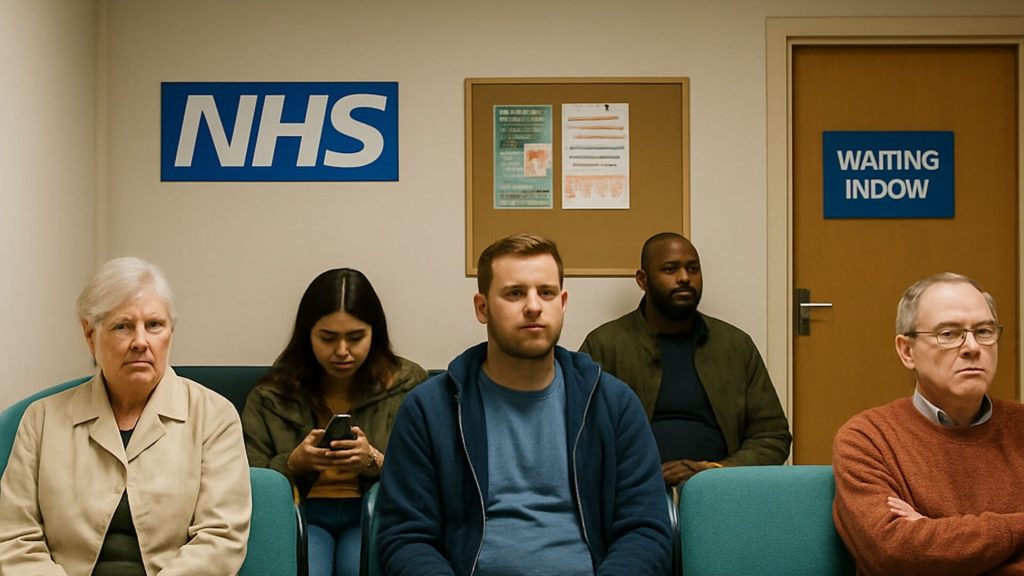- £153 billion shortfall, 7.6 million people waiting
- 8.5% vacancies strain NHS workforce
- Outdated facilities limit modern care
- Faster access, personalised service, higher costs
- Funding, tech, staff retention, partnerships
The National Health Service (NHS) remains the cornerstone of healthcare in the UK, providing treatment based on need rather than income. Since its creation in 1948, the NHS has been a symbol of universal care. However, it faces growing challenges including funding shortages, staff vacancies, and ageing infrastructure. These ongoing pressures have led many people to explore private healthcare for faster or more personalised access.
This article examines the main problems facing the NHS, compares NHS and private healthcare, and highlights potential long-term solutions including how innovative private services, such as Monderma’s personalised skincare, support accessibility.

Current Problems & Pressures Facing The NHS
Funding Constraints
The NHS continues to face financial pressure as demand rises faster than available resources. In 2022–23, its total budget reached £153 billion, but growing demand and operational costs have created shortfalls [a].
In mid-2024, over 7.6 million people in England were on hospital waiting lists [b]. Limited funds restrict staff recruitment, facility upgrades, and service expansion. These pressures have required prioritisation of urgent cases and created extended waiting times for elective procedures.
Staffing Shortages
Staffing shortages remain one of the most pressing NHS challenges. In 2023, there were approximately 121,000 vacancies across clinical and non-clinical roles, representing a vacancy rate of 8.4% [c].
This strain leads to longer working hours, burnout, and higher staff turnover. Retaining and training staff through competitive pay, improved working environments, and career progression opportunities are vital steps to improve workforce stability.
Ageing Infrastructure
More than one-third of NHS hospitals operate in buildings over 50 years old [d]. Outdated facilities reduce efficiency and struggle to accommodate modern technologies. Refurbishing and rebuilding hospitals requires major investment, but these projects often compete with the need to maintain day-to-day services.
Administrative Complexities
The NHS’s scale and administrative layers can slow processes. Bureaucracy and manual systems increase delays in patient flow and resource use. Increasing digital transformation through integrated data systems and automation may improve patient management and staff efficiency.
NHS Vs Private: Comparing Key Differences
| Factor | NHS | Private Healthcare |
|---|---|---|
| Accessibility | Free at the point of use but may involve waiting times | Paid service offering faster access |
| Waiting Times | 7.6 million people waiting for treatment in 2024 [b] | Appointments available sooner |
| Quality of Care | Comprehensive services under one system | Modern facilities and choice of specialists |
| Cost | Funded by taxation | Funded by private insurance or self-payment |
| Flexibility | Limited by resources | Patients choose specialists and timing |
Table 1: Overview of NHS vs private healthcare
Personalised Skincare & Private Sector Innovation
Private care providers have introduced more digital, patient-focused models that complement NHS services. Monderma, a UK-based provider, offers prescription skincare tailored to concerns such as acne, ageing skin, hyperpigmentation, and rosacea.
After completing a free online consultation, GPhC-registered prescribers review suitability and create personalised formulas containing dermatological actives such as tretinoin, niacinamide, or azelaic acid in a vegan base [e].
This model demonstrates how private digital healthcare can reduce waiting times and improve access while supporting patients who may face long NHS dermatology waits. Monderma’s approach aims to complement, not replace NHS dermatological care.
Long-Term Solutions For NHS Sustainability
Increased Investment
The Institute for Fiscal Studies reports that NHS funding needs to grow by 3–3.5% per year in real terms to keep pace with demand [f]. Funding should target staffing, facility modernisation, and preventive care to reduce pressure on hospitals.
Recruitment & Retention
The NHS Long Term Workforce Plan (2023) aims to expand training places by 30% by 2030 [g]. Improving pay structures, staff wellbeing, and flexible working arrangements can support retention and reduce burnout.
Embracing Technology
Digital health tools such as telemedicine and electronic health records can increase efficiency and reduce administrative workloads. By 2023, around 90% of NHS trusts had implemented digital patient records [h]. Ongoing digital transformation remains a central pillar of modernisation.
Public-Private Partnerships
Collaborations between public and private sectors can help reduce waiting lists and share best practices. Such partnerships must remain transparent and prioritise public benefit, ensuring care quality across all providers [i].
Choosing Between NHS & Private Healthcare
Choosing between NHS and private healthcare depends on personal needs, urgency, and financial capacity. The NHS guarantees access to essential treatment for all, while private care offers flexibility and shorter waiting times.
Private healthcare options, including Monderma’s tailored prescription skincare, can complement NHS services for non-urgent conditions by providing accessible and efficient care. To explore whether a personalised approach could support your skincare goals, complete a free online consultation today.
Content is for informational purposes only. Monderma treatments are prescribed following consultation. Results and timeframes can vary. Use as directed by your prescriber.
Bibliography
- NHS England. (2023). NHS budget allocation 2022–23.
- NHS Confederation. (2024). Key statistics on the NHS.
- The King’s Fund. (2023). NHS workforce vacancies report.
- UK Parliament. (2024). Hospital building in England: Plans and progress.
- Monderma. (2024). Prescription skincare treatments.
- Institute for Fiscal Studies. (2023). NHS funding, resources and treatment volumes.
- NHS England. (2023). Long term workforce plan.
- UK Parliament Health and Social Care Committee. (2023). Digital transformation in the NHS.
- The Health Foundation. (2022). Health care funding.
Find your perfect skincare formula
Takes less than 2 minutes – see what your skin needs
Get Custom Formula













